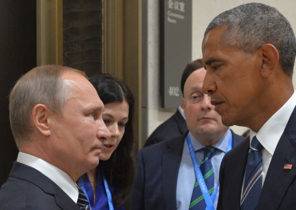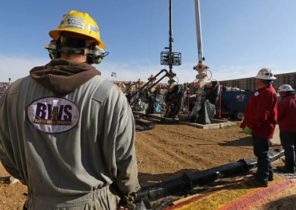
At the end of world war II, Soviet dictator Josef Stalin, was undeniably the most powerful man in Eurasia. His Red army defeated Nazi Germany — repelled the invasion and were preparing to conclude an exhausting four-year campaign to take Berlin. Land forces of Stalin was, apparently, stronger than the armies of America, Britain, France and other Western countries combined.
However, all this was not enough.
The Soviet leader had long dreamed of a strong fleet which would extend Soviet influence far beyond Europe, and Asia — and with the widest possible scope.
He needed battleships — battleships. However, this Navy was in fact an unrealistic project, existed largely only on paper, and even included some number of formidable ships that were outright hoaxes.
The idea
During the Second world war, the fleet was for the Soviet Union is only the third most important direction. The brunt of heavy fighting and protracted campaigns against Germany carried the Red army. Helped her the red air force, which, like the Luftwaffe, specialized in the provision of tactical support of ground forces. The Navy, for its part, played a very limited role, escorting merchant ships, which brought aid from America via lend-lease, supporting land operations and disturbing the German forces in the black sea and Baltic regions.
However, by mid-1945, to Stalin it was clear that after the victory over Germany his main opponents will be the United States and the United Kingdom, protected from his armies. The same applied to Japan, which the Soviet Union is not allowed to occupy, and to many of the former colonies ripe for revolution. What would the mighty, neither was the army of Stalin, but if he wanted his country to remain among the leading military powers, he needed a strong Navy.
Why battleships?
By the end of the Second world war, it became apparent that battleships were obsolete. The main class of ships were the aircraft carriers than the Japanese Empire had to learn the hard way during dozens of battles in the Pacific theater of operations. After the war the Western allies basically gave up on battleships, but have kept their aircraft carriers.
However, Stalin still preferred aircraft carriers battleships. At the meeting of the Soviet leadership in September 1945, Stalin rejected the proposal to build aircraft carriers and instead decided to build a battleship “Soviet Russia”, founded in 1940 and built by the end of the war less than 1 percent. He also instructed the Navy to build two battleships of the “project 24”, with a displacement of 75 thousand tons, and seven heavy cruisers “project 82” (“Stalingrad”), with a displacement of 36500 tons, equipped with nine 12-inch guns. At the same time, Stalin approved the construction of only two small carriers that was useless given the naval superiority of America and Britain.
Bad plan
This plan was doomed to failure. The Soviet Union never possessed a large shipbuilding capabilities, and in addition, their development was further slowed by the Great Patriotic war. Moreover, the industrial capacity of the country during the war was badly damaged and required restoration. Resources are barely enough to cover the most urgent goal, and as a result the idea of the surface fleet, Moscow had gradually to be abandoned. Battleships with a displacement of 75 thousand tons and has not been built, and seven heavy cruisers began to build only two — and none completed. Finally the dream of a powerful fleet of battleships vanished in 1953 with the death of Stalin.
Meanwhile, to the West and leaked information about a new type of Soviet superliners. Some publications, including, allegedly, even Jane’s Fighting Ships, spread rumors about the seven new superliner, nicknamed “K-1000”, which supposedly was built on the Siberian shipyards.
Seven SuperKaramba — “land of the Soviets”, “Soviet Belorussia”, “Red Bessarabia”, “Red Siberia”, “the Soviet Constitution”, “Lenin” and “Soviet Union” — was supposed to have a displacement of between 36 000 and 55 000 tons, which, oddly enough, was less than that approved by Stalin projects. According to different versions, the speed of their progress had to be 25 to 33 knots, and their armament was to consist of nine to twelve 16-inch guns and twelve 18-inch guns. It was also assumed that, in addition, they will be armed with guided missiles.
The problem was that it was a hoax. Initial rumors appeared in the Western press, however, the Soviet Union, learning about them, began to encourage their proliferation. Some of the alleged names of the ships belonged to the earlier ships of the type “Soviet Union”, the construction of which was cancelled. Information looked realistic enough to believe, although the Soviet Union at that time was not guided missiles that could arm the ship. Overall, this hoopla has been extremely beneficial to Moscow. If NATO countries believe in the imminent appearance of the USSR many superliners, they would have to develop a means to counteract what the left would have the resources necessary land forces that defended Western Europe.
Being predominantly a land power, the Soviet Union was doomed to spend the most resources on ground forces. Sea power inevitably appeared for him in third place. Although the Soviet Union in the 1980’s, and have adopted four heavy cruisers type “Kirov” Stalin’s dream of the great red fleet never came to life.
Kyle mizokami lives in San Francisco and writes about defense issues and national security. His articles have been published in the Diplomat, Foreign Policy, War is Boring and the Daily Beast. In 2009 he founded devoted to the problems of defense and security blog Japan Security Watch.






